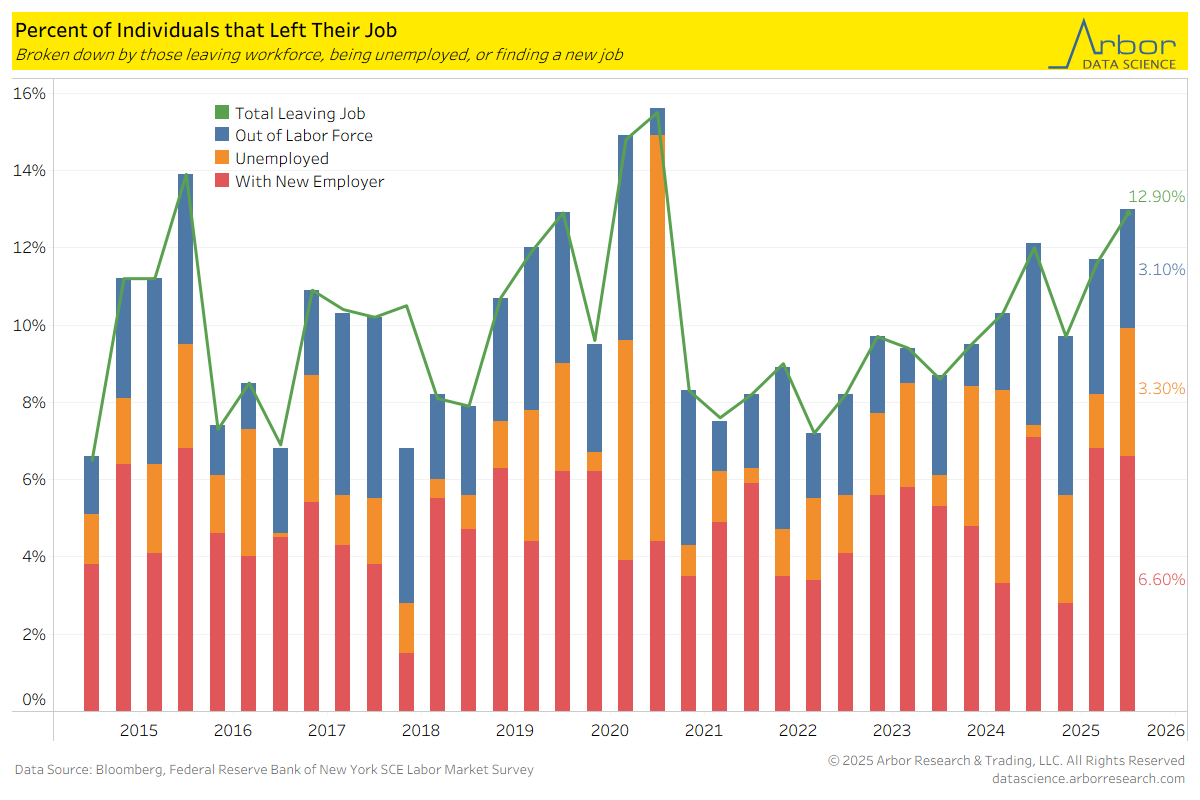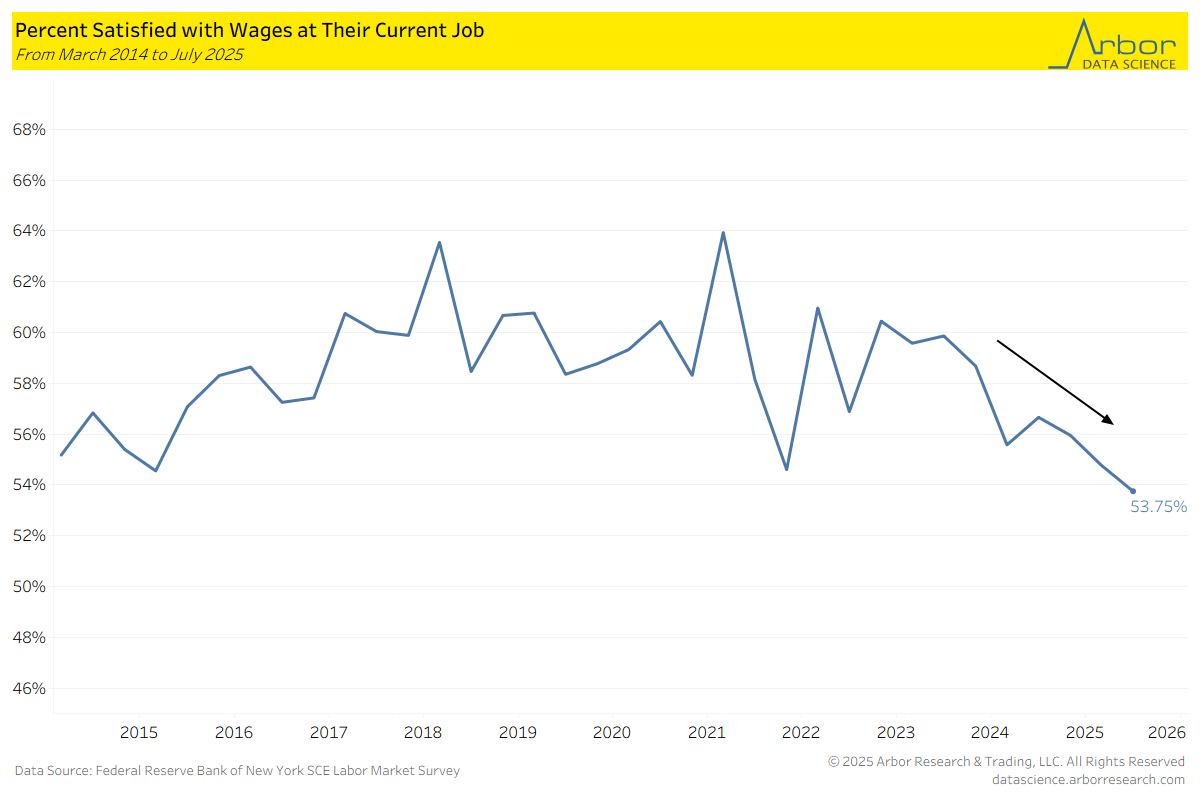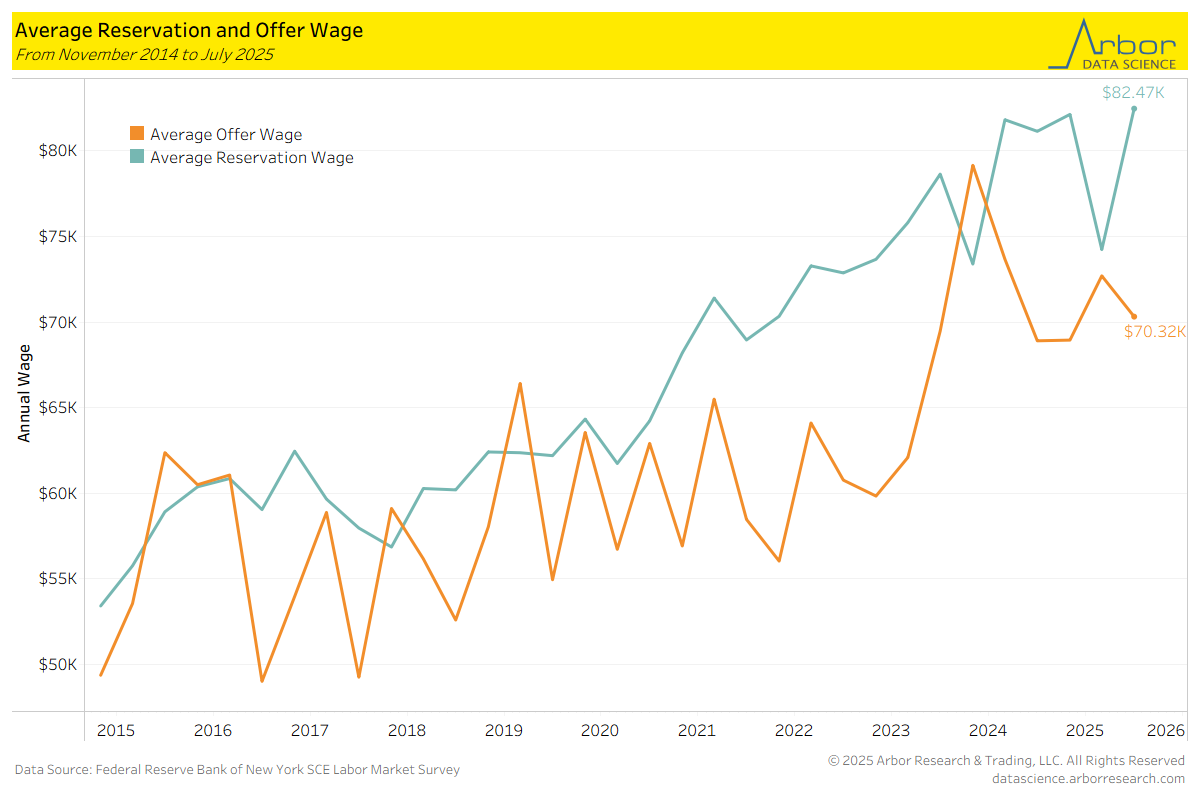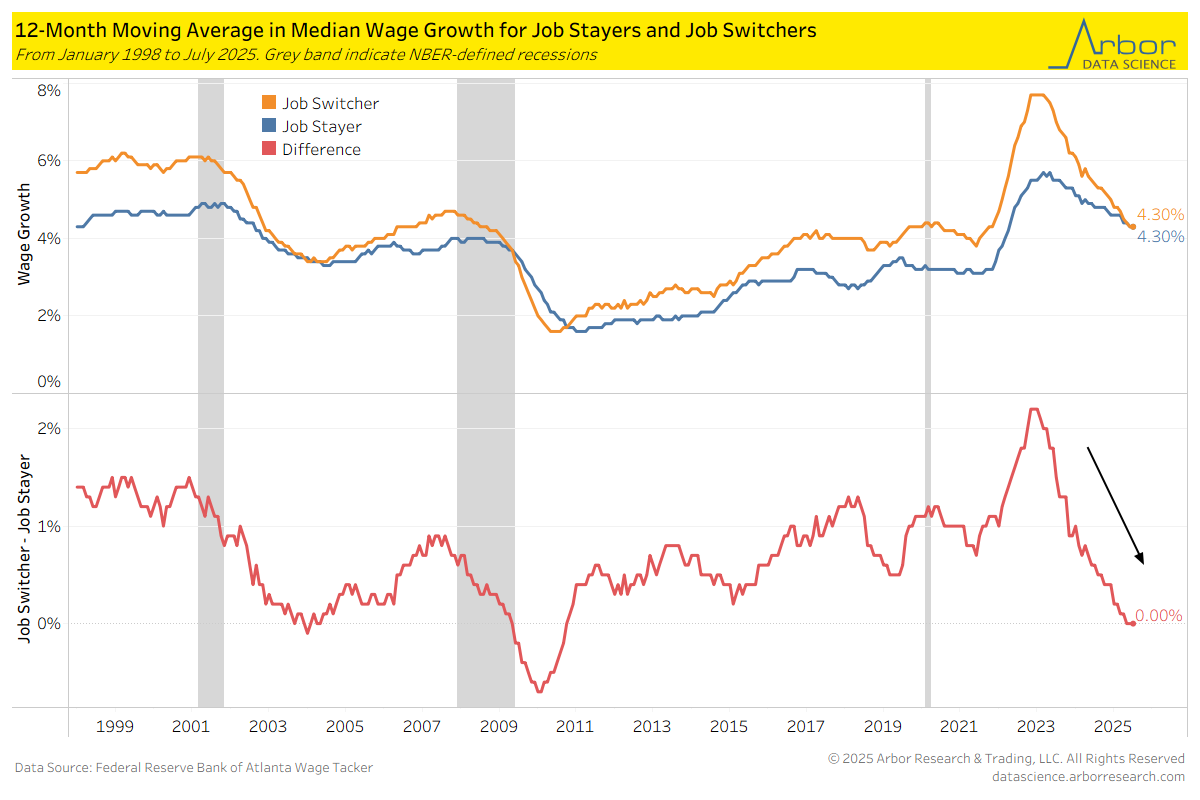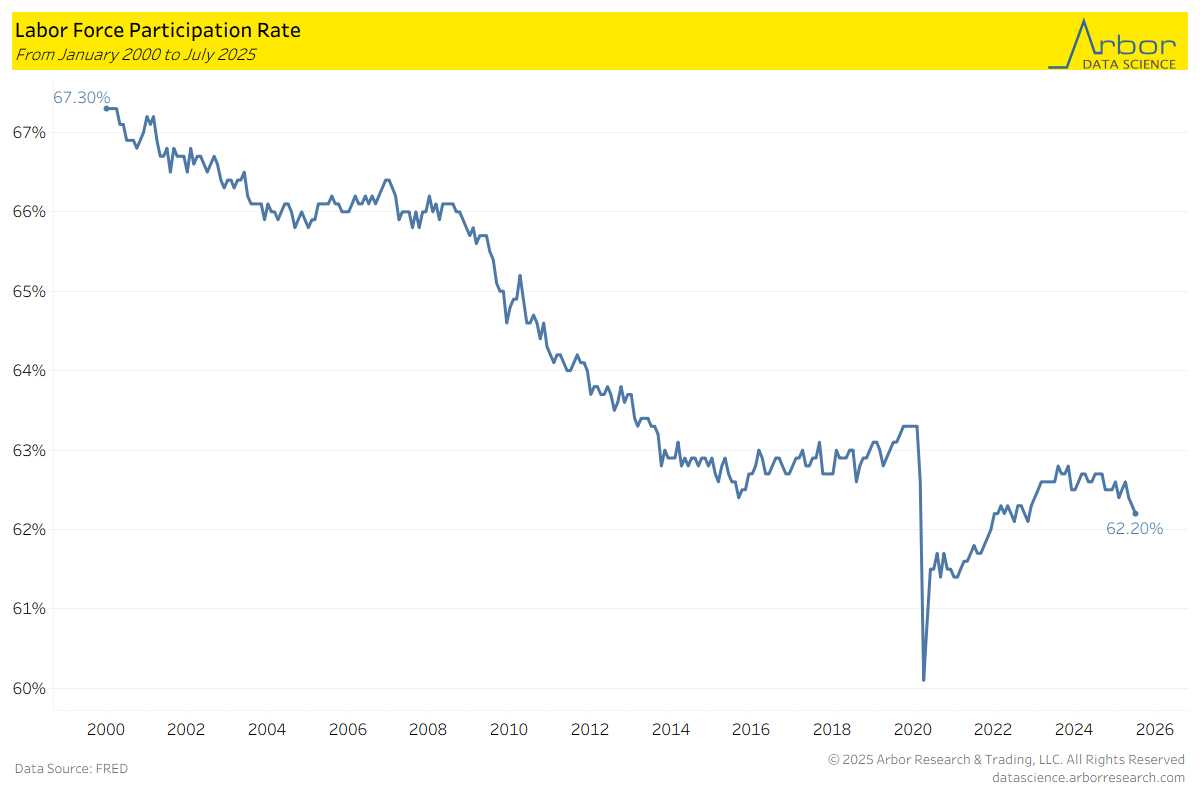Like The Clash in 1982, workers are often asking themselves whether they should stay at the current position or look for a new opportunity.
Rate of Job Switchers Increased in July 2025
- According to the Federal Reserve Bank of New York’s SCE Labor Market Survey, 12.90% of those employed in March 2025 had left their job by July 2025. This was the highest level since July 2020 when 15.50% left their job after being employed four months earlier.
- Of the 12.90% who left their job, 6.60% found a new employer, 3.30% were unemployed, and 3.10% had left the labor force.
Percent Satisfied with Their Wage Hit New Low
- Only 53.75% of respondents were satisfied with their current wage in July 2025, an all-time low since the SCE Labor Market Survey began in 2014.
- This measure has decreased in five of the last six surveys.
Reservation Wage Increased while Offer Wage Decreased
- Despite the increase in people leaving their current jobs, there was a divergence in the average reservation wage and the average wage offered by a new job. The reservation wage measures the lowest wage that respondents would accept for a new role.
- The average reservation wage was $82,470 and the average wage offered for a new role was $70,320 in July 2025.
Decline in Wage Growth Premium for Job Switchers
- According to the Federal Reserve Bank of Atlanta’s Wage Growth Tracker, the difference in wage growth for job switchers compared to job stayers was 0.00% in July 2025. This was the first time it was 0.00% since October 2010.
- For July 2025, both job stayers and switchers saw a 4.30% growth in the 12-month moving average of monthly median wages.
A Continued Decrease in Labor Force Participation
- Our last post examining the labor market emphasized that new immigration policy may impact the supply of labor in the U.S.
- In addition to this potential downturn in labor supply, the labor force participation rate continued to decline to 62.20% in July 2025.


